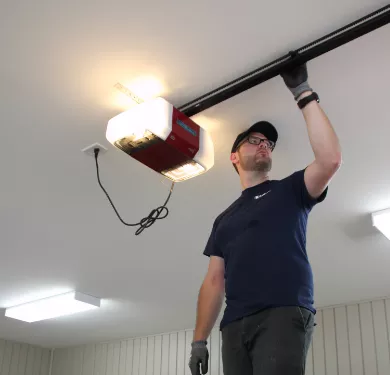Let’s make this simple. The answer to the question posed in the title of this post is a resounding yes. Like most other systems in your home, your garage door and opener need regular maintenance. Otherwise, it will suffer from premature wear and tear, and eventually break down. It may even become a safety hazard for you and your family. All those issues can be avoided with some basic maintenance that’s easy to do.
Remember – your garage door is the single largest, heaviest moving object in your home. You and your family use it regularly to enter and exit the home, too. It’s worth your time to make sure that everyone is safe when using the door.

The reality of garage door accidents
To provide some insight into the reality of garage door accidents in the US, consider the fact that in 2014 alone, more than 18,000 incidents occurred involving garage doors. All of these were related to malfunctions of some type, but they fell into one of three categories:
- Component failure
- Imbalanced spring system (counterbalances the door’s weight)
- Misadjusted calibration of the photoelectric or mechanical auto reverse system
Set a reminder
We use our devices to set reminders to take out the trash, to pay bills, to take medications, and more. It’s simpler than ever to ensure that you can do what needs to be done without worrying that you’re going to forget about it. Garage door maintenance can be scheduled in the same way. Add it to your calendar so that you get an alert when the time gets close.
What sort of maintenance do you need to perform, though? Don’t worry. It’s all simple stuff, and really just boils down to lubricating the major metal components, testing your reverse systems, and inspecting the entire door for signs of damage or wear and tear.
Everything you need to know about garage door maintenance
We recommend that you perform maintenance twice per year on your garage door. Spring and fall are the ideal times here. However, if you use your garage door frequently (more than four times per day), then you may want to do this quarterly.
Your visual inspection
- Look at your entire system, but also pay attention to the sounds it makes during operation. Listen for abnormal noises that might give you a clue to a potential problem.
- Visually inspect the lift cables located beside the vertical track section. Do you see fraying or any other type of damage?
- Check the cable drum. Is everything aligned and in good condition?
- Check your spring system – you’ll have either extension springs located over the horizontal tracks, or torsion springs located over the door inside a steel tube. Do you see any signs of damage?

- Check the rollers. Are they damaged? Are they sliding instead of rolling?
- Look at the door hinges. Are all the bolts nice and tight? Do you see any damage to the bottom brackets where the lift cables attach?
- Make sure to check the weatherstripping at the bottom of the door, as well as on the outside. Do you notice any damage or holes?
- Check your photoelectric reversal system. Are the eyes aligned? Are they clean and in good condition?
Lubricating your components
You’ll need two types of lubricant here. The first is a basic car engine oil, such as 5W30. You’ll use this for the metal components. The second is a silicone‑based lubricant spray, and it will be used for the weatherstripping at the bottom of the door and between the sections. You can find both types of lubricant with Overhead Door NFLD. Before applying new lubricant, make sure to clean old grease and oil off.
Lubricating metal parts
- Apply a little bit of oil to your springs. Remove any excess with a clean cloth.
- Apply a little oil to the ball bearings within the rollers.
- Apply a little oil at the junction of the hinges.
- Put a little oil on the curve of the track, and on the horizontal portion.

Lubricating weatherstripping
- Lubricate the interior side of weatherstripping on the exterior frame.
- Lubricate the full length of weatherstripping between door sections, particularly if you have PVC weatherstripping.
- Lubricate the entire U‑shaped weatherstripping piece on the bottom of the door.
Testing for safety
It’s vital that you test both of your automatic reverse systems regularly. Some authorities recommend that you do this once per month. That’s how critical it is that they stay in good working condition.
First, you’ll want to test the mechanical reversal system. To do this, you’ll need to put a 2 x 4 under the door. Start it closing. When the door edge contacts the wood, it should immediately reverse. If it doesn’t, then you need to have service immediately.
Next, you’ll need to test the photoelectric eye system. Start the garage door closing. While it’s in motion, move your foot in front of one of the two photo eyes at the bottom of the door track. The door should immediately reverse. If it does not, you need to check the alignment of the eyes, as well as whether they need to be cleaned.
If either of your automatic reverse systems fails to work correctly, get in touch with Overhead Door NFLD immediately.

No time for maintenance?
We’re all busier than ever with our daily lives. It’s possible that you just don’t have time to handle your garage door maintenance on your own. If that’s the case, or if you just want to make sure that a professional handles it, we can help. Call us at 709-368-7222. Not only can we offer a tune‑up service, but we can also talk to you about new garage doors and openers if it is time to upgrade. Don’t want to discuss things over the phone? We’re happy to offer an email quote, too.







Add new comment